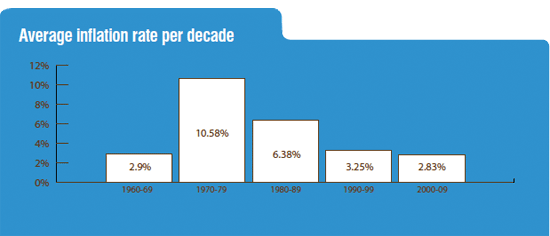brown on green: Actual Earnings Versus Net Earnings
by David Brown
As investors, we are always concerned about an investment’s earnings rate. When we look at a mutual fund, we consider its current rate as well as the five-year, ten-year, and lifetime returns. When we consider a certificate of deposit (CD), we compare the two-year rate with the five-year rate. While earnings are important, we also need to compare the “actual” earnings rate to “net” earnings rate.
First, let's define the terms. The actual rate is the earnings rate printed on the statement. For instance, a CD rate may be 1.5%. The net earnings rate is the actual rate less the inflation rate. In 2009, for the first time since the Great Depression, the United States had a negative inflation (or deflation) rate of .34%. This means that in 2009, net rate was 1.84%. However inflation has turned positive over the last few months and appears to be headed for a rate of at least 2% for 2010. This means a 1.5% rate on a CD has a net rate of negative .5%. The net rate is a better indicator of how your investments are doing than the actual rate. Your investments must top inflation before you earn anything.

Inflation has been and will continue to be a factor in the performance of your investments. Inflation affects everything, including the value of your money. For example, if you bought $100 worth of goods and services in 1960 (50 years ago) it would cost you $639 in 2010 to buy the same amount of goods and services. While inflation has been very moderate during the last 20 years, it still has an impact on the earnings of your investments.
During the late 70s and early 80s the nation experienced some of the highest rates of inflation in history. Today, we would be celebrate an eight percent rate of return, but in 1979, you that would have been a negative 5.3% net return because inflation was 13.3%.
Financial planners suggest that if you plan to invest in a balanced fund portfolio with a mix of stocks and bonds, you should conservatively expect eight to nine percent returns in the future. These same financial planners suggest you should also expect an inflation rate of four to five percent in the future. They are basically saying you should expect a net earnings rate of four to five percent.
Keep in mind that the really important rate is not the actual earnings rate but the net earnings rate. In the future, remember to calculate the net earnings rate by subtracting the inflation rate.
Brown on Green is a regular column written by Free Will Baptist Foundation Director David Brown. The column offers financial advice, addresses hot-button business topics, and answers your finance questions. Contact David with your questions.
|

